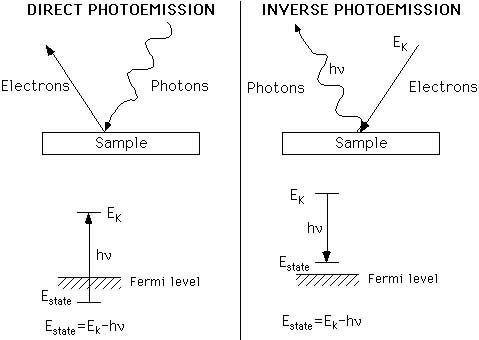IPES
Inverse PhotoEmission Spectroscopy
Characterisation Installation 5
IPES probes the empty density of states above the Fermi level of conduction/valence band in condensed matter. The energy of the impinging electron is varied while photons are detected at fixed energy; in this way the spectrum of the density of unoccupied states is obtained. IPES technique is complementary to Photoemission (PES) and combined PES-IPES data provide information on the surface electronic transport.
The equipment includes two ultra high vacuum (UHV) chambers and a transfer load lock. The preparation chamber has standard Surface Science tools, with a CMA for Auger Electron Spectroscopy (AES) and Low Energy Electron Diffraction (LEED) and is also used for the growth of the films of the organic molecules and metals. The connected second UHV chamber is devoted to the empty electronic states analysis by means of Inverse Photoemission, with Geiger Mueller detectors and a highly collimated electron gun, overall resolution<0.3 eV. This configuration allows an Angular Resolved IPS acquisition (KR-IPS), i.e. the mapping of unoccupied electronic states vs the wave-vector k// . The Load lock is a movable UHV chamber which can be connected with other apparatus, including beamlines at nearby ELETTRA facility, to complement the KR-IPS with Direct Photoemission (PES), Core level photoemission and NEXAFS.

Inverse Photo-Emission Spectroscopy
Highly collimated electron beam, variable impinging angle for angular resolved IPES, divergence <2°, current on sample @ 0.1-10 µA

